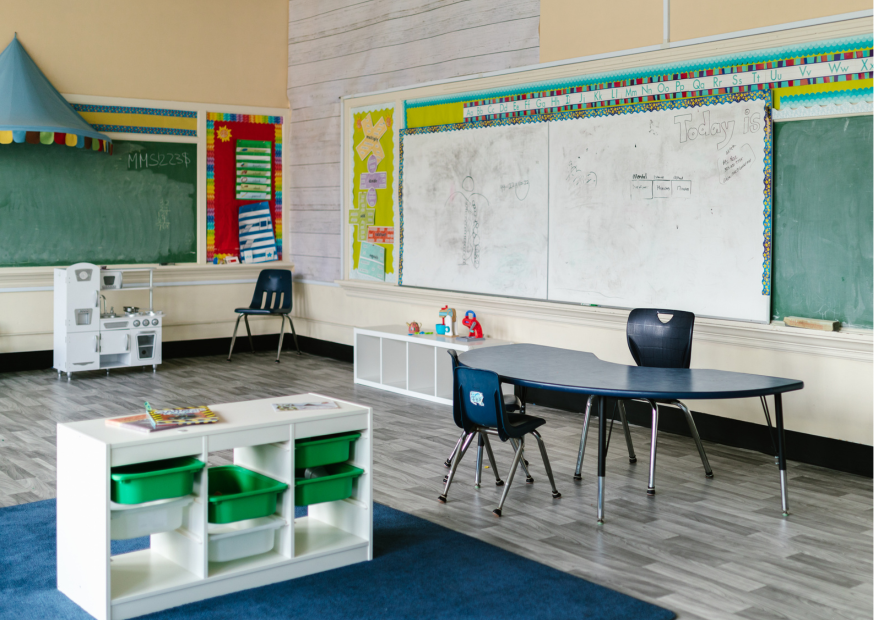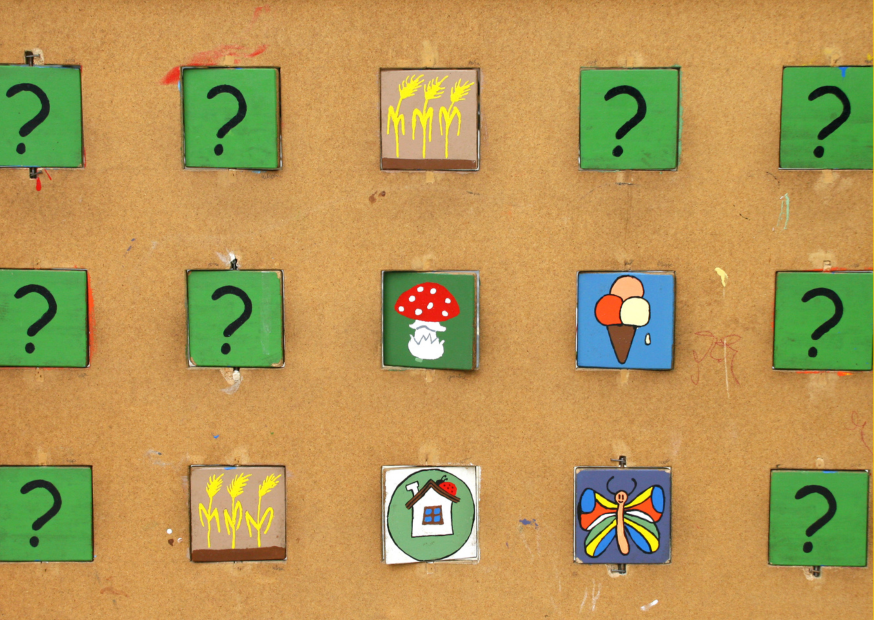
The content of this article is based on the presentation, Plethora of Pedagogical Ploys by Pamela Parks, which was part of the World Language Teacher Summit.
11 Teaching Methods to Meet Different Learning Styles and Goals
In language education, using a mix of different methods is key to boosting understanding and keeping students interested. Trying out various teaching techniques gives educators plenty of options to create engaging and effective lessons.
Today, we'll look at eleven teaching methods, each designed to meet different learning styles and goals. Diving into language learning isn't just about memorizing vocab and getting the grammar right—it's also about making the process engaging and fun!
The Audio-Lingual Method
Ever tried learning a language with drills that actually don't bore you to sleep? That's the Audio-Lingual Method for your students.
The Audio-Lingual Method emphasizes the use of structured drills and cultural elements to bolster language skills. By implementing chain drills, substitution drills, transformation drills, and minimal pairs practice, learners engage in repetitive exercises that aim to solidify linguistic foundations.
This approach tackles the risk of fossilization — the ingraining of incorrect language forms — by ensuring immediate correction of mistakes. Expanded language skits introduce new vocabulary and cultural contexts intuitively, fostering an environment where grammar rules are learned organically rather than through direct instruction.
Communicative Approach
Imagine learning a language just by chatting and solving real-life puzzles with your peers. The Communicative Approach throws you into just that—tons of interaction where you figure out meanings and get your message across effectively. It's all about practical usage, making you ready to use your new language skills in the real world in no time.
This approach highlights the significance of social interaction in language acquisition. Here, the primary focus extends beyond mere verbal exchange to encapsulate the negotiation of meaning among communicators. Activities are designed to simulate real-life scenarios where learners must use the target language to accomplish specific communicative objectives. Utilizing handouts to practice grammar points, and engaging in activities like paraphrasing and text restructuring, students enhance their communicative competence through practical engagement.
Total Physical Response (TPR)
Who thought you could learn language commands by playing games like Jenga? With Total Physical Response, you actually respond to commands through movement. It's great for picking up new commands and vocab without the stress of heavy memorization.
Total Physical Response is built on the premise that physical action can aid in the learning process, particularly during the early stages of language acquisition. Teachers give commands in the target language, and students respond through physical movement. This method effectively teaches basic commands and vocabulary, as evidenced in an activity using the Jenga game to instruct on imperatives, action sequences, and conditional statements.
Guided Language Acquisition Design (GLAD)
GLAD mixes things up with big books, visual aids, and group activities. It provides a structured way of learning where everyone gets a chance to contribute through peer tutoring. Whether you learn better by seeing, hearing, or doing, GLAD has something for you.
This method supports student repetition and peer-to-peer tutoring through the organization of expert groups, where more knowledgeable peers assist others. Such a structured yet adaptable approach helps accommodate different learning needs within diverse classroom settings.
Organic World Language (OWL)
Ready to ditch the chairs and get talking? OWL is all about making the classroom a lively hub of conversation. By removing physical barriers, this method encourages learners to chat away, building up their conversational skills naturally and effectively.
The OWL method focuses on creating a highly interactive classroom environment to stimulate conversation. One notable practice includes removing traditional classroom furniture to encourage full-participant engagement and lessen physical barriers to communication. This method champions conversational practice as the core of language learning, encouraging learners to actively produce and manipulate language in real-time discussions.
The Silent Way
Ever wondered if your students could figure out a language by just exploring it themselves? The Silent Way hands them the reins of their own learning.
The Silent Way advocates for learner independence in hypothesis testing and experimentation with language. Equipped with tools such as Cuisenaire rods for phonetic instruction, this method challenges students to explore and articulate their own linguistic understanding with minimal interaction from the teacher. Despite its challenges, especially the teacher's minimalistic intervention, it fosters a deep sense of language ownership among students.
Technology-Enhanced Learning
The integration of technology in language teaching has opened up new avenues for instructional strategies. Websites like peaksay.com and Google Translate are utilized for pronunciation practice, while platforms such as Project Gutenberg provide invaluable resources for accessing a wide range of public domain literature, thereby enriching the learning material available to students.
Game-Based Learning
Nothing beats learning while playing. Whether it’s figuring out grammar through "Battleship" or practicing vocabulary with "Quiz, Quiz, Trade," game-based learning turns a class into an exciting challenge, keeping everyone eager and involved.
Game-based learning contributes significantly to student engagement and peer learning. These games not only make learning fun but also incorporate essential linguistic objectives, enabling students to practice and reinforce language skills in a playful, competitive environment.

The OWL method focuses on creating a highly interactive classroom environment to stimulate conversation
TPR Storytelling (TPRS)
Take TPR up a notch with storytelling where you create the most ridiculous and memorable stories to practice the language. It's all about letting your imagination run wild while learning vocabulary and grammar in the most enjoyable way possible.
TPRS enhances traditional TPR by integrating storytelling and creative expression. By encouraging students to create and narrate bizarre and memorable stories, this method ensures effective vocabulary retention and grammar practice. It strategically uses repetition and role-play to lower affective filters, making language acquisition a more relaxed and enjoyable venture.
Brain Breaks
Need a quick refresh during a heavy class? Brain breaks filled with music and light activities help you reset and refocus, making sure you're always at your best during learning sessions.
Incorporating brain breaks through cultural music and movement activities helps manage cognitive load during intense learning sessions. These small intervals allow students to relax and re-energize, fostering better concentration and involvement when the session resumes.
Community Language Learning
Picture learning in a circle with your mates, recording your conversations, and building your confidence together. Community Language Learning turns language practice into a supportive experience, where everyone helps each other grow.
Activities like circle conversations with recording devices not only promote language production but also help in building confidence among learners. This method beautifully illustrates the role of the teacher as a counselor, guiding and facilitating rather than dictating, thereby nurturing a nurturing learning environment.
FAQs About Strategies for Modern Language Teaching
What are some examples of interactive activities to enhance student engagement in language learning?
Incorporate these interactive activities into language lessons to create a dynamic and engaging learning environment that motivates students to actively participate and practice language skills:
- Games: Incorporating language learning games such as vocabulary quizzes, word puzzles, language bingo, or language charades to make learning fun and interactive.
- Role-plays: Engaging students in role-playing scenarios where they can practice real-life language interactions, such as ordering food in a restaurant, making travel arrangements, or participating in a job interview simulation.
- Group Tasks: Assigning group tasks that require students to collaborate and communicate in the target language, such as group discussions, debates, or problem-solving activities.
- Interactive Storytelling: Encouraging students to participate in interactive storytelling activities where they create and narrate stories in the target language, fostering creativity and language expression.
- Language Exchanges: Organizing language exchange sessions where students can interact with native speakers or peers learning the same language, providing opportunities for authentic language practice and cultural exchange.
- Virtual Language Tours: Taking students on virtual language tours of different countries or cultural sites where they can learn about language, customs, and traditions through interactive multimedia resources.
- Language Challenges: Introducing language challenges or competitions that motivate students to practice and improve their language skills, such as pronunciation challenges, vocabulary races, or language trivia quizzes.
How can leveraging high-energy games enhance language learning in the classroom?
Leveraging high-energy games in the language learning classroom can have several detailed benefits:
- Increased Engagement: High-energy games capture students' attention and maintain their interest throughout the lesson. The excitement and competitiveness of these games motivate students to actively participate and stay focused on the language learning tasks.
- Enhanced Interaction: Games encourage students to communicate with their peers in the target language. Whether it's through team-based activities or competitive games, students have more opportunities to practice speaking, listening, and even writing in a meaningful context.
- Repetition and Practice: Games provide a platform for students to repeatedly use and reinforce language skills in a fun and non-threatening way. The repetitive nature of games helps solidify vocabulary, grammar rules, and language structures in students' memory.
- Contextual Learning: High-energy games often simulate real-life situations or scenarios, allowing students to apply language skills in practical contexts. This contextual learning approach helps students understand how language is used in authentic situations, improving their language proficiency.
- Positive Learning Environment: By incorporating games, educators create a positive and supportive learning environment where students feel comfortable taking risks and making mistakes. This fosters a growth mindset and encourages students to actively engage in the language learning process.
- Skill Development: Games promote the development of various language skills, including speaking, listening, reading, and writing. Depending on the game format, students may also enhance their critical thinking, problem-solving, and decision-making abilities.
- Teamwork and Collaboration: Many high-energy games involve teamwork and collaboration, encouraging students to work together towards a common goal. This promotes social interaction, cooperation, and the development of interpersonal skills among students.

Game-based learning contributes significantly to student engagement and peer learning
What are the benefits of using methods like Total Physical Response and the Silent Way in language teaching?
Total Physical Response (TPR) and the Silent Way are two language teaching methods that offer unique benefits in the language learning process:
Total Physical Response (TPR):
- Enhanced Comprehension: TPR emphasizes the connection between language and physical actions, which can enhance students' comprehension of vocabulary and commands through kinesthetic learning.
- Engagement and Motivation: The use of movement and gestures in TPR activities can increase student engagement and motivation by making language learning interactive and fun.
- Reinforcement of Language Skills: TPR helps reinforce language skills such as listening and following instructions, as students must respond physically to verbal commands.
- Reduced Anxiety: The physical nature of TPR activities can help reduce language learning anxiety, as students can demonstrate understanding through actions rather than solely through verbal responses.
- Memory Retention: The multisensory approach of TPR, combining auditory, visual, and kinesthetic elements, can aid in memory retention and recall of language concepts.
The Silent Way:
- Student-Centered Learning: The Silent Way promotes student autonomy and active participation in the learning process, allowing students to take ownership of their language acquisition.
- Focus on Pronunciation and Intonation: By limiting the teacher's speech and encouraging students to produce language, the Silent Way emphasizes accurate pronunciation and intonation.
- Critical Thinking Skills: Students in the Silent Way method are encouraged to problem-solve and discover language patterns independently, fostering critical thinking skills.
- Creativity and Experimentation: The Silent Way encourages creativity in language use and experimentation with language structures, promoting a deeper understanding of the language.
- Self-Expression: Students have the opportunity to express themselves in the target language without constant teacher intervention, leading to increased confidence and fluency.
The Importance of Flexibility and Adaptability
The exploration of these diverse language teaching techniques reveals a common objective: to create highly engaging and responsive learning environments that cater to various learner needs. Each method, with its unique focus and strategy, underscores the importance of flexibility and adaptability in teaching practices.
By integrating these approaches, teachers can enhance language comprehension and usage among students, preparing them better for real-world communication challenges.
Discover more language teaching techniques to help you in your classroom.